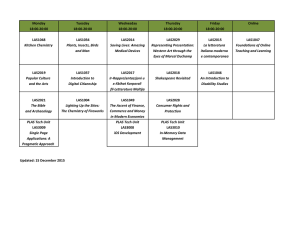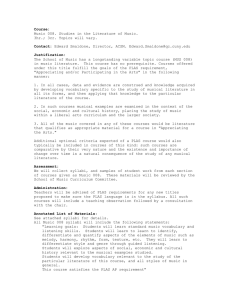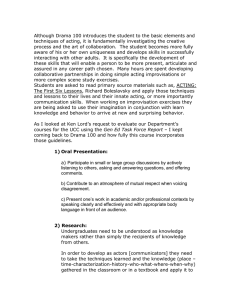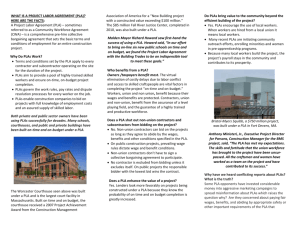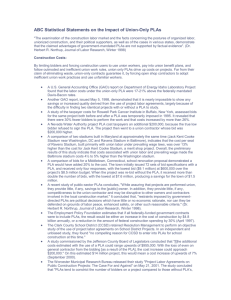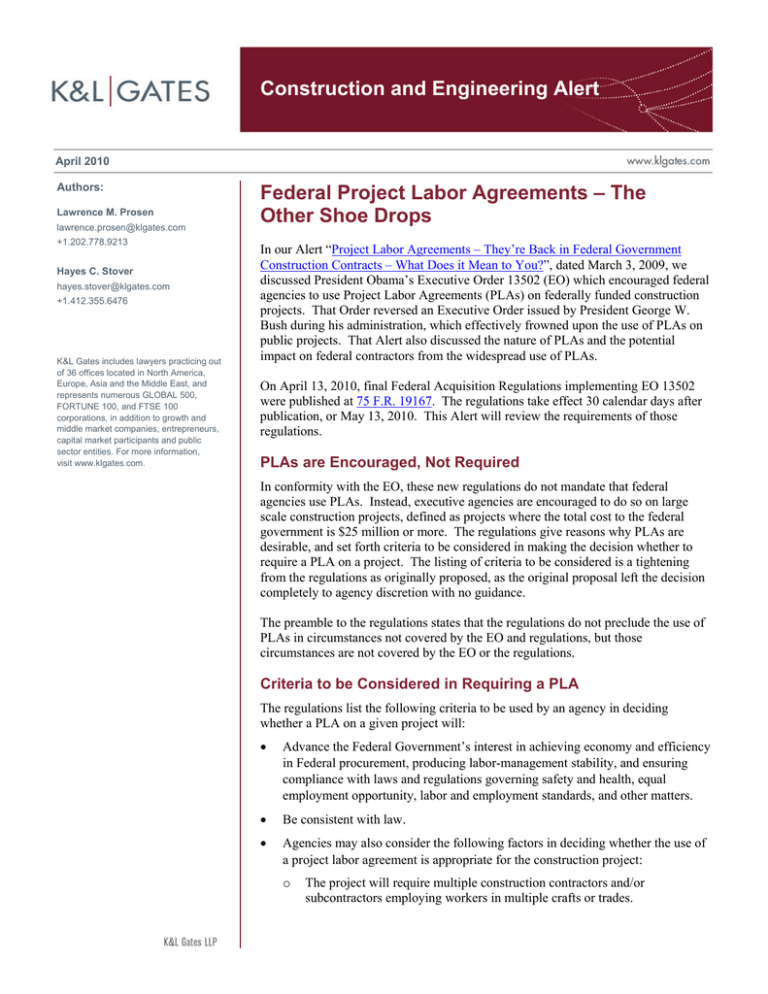
Construction and Engineering Alert
April 2010
Authors:
Lawrence M. Prosen
lawrence.prosen@klgates.com
+1.202.778.9213
Hayes C. Stover
hayes.stover@klgates.com
+1.412.355.6476
K&L Gates includes lawyers practicing out
of 36 offices located in North America,
Europe, Asia and the Middle East, and
represents numerous GLOBAL 500,
FORTUNE 100, and FTSE 100
corporations, in addition to growth and
middle market companies, entrepreneurs,
capital market participants and public
sector entities. For more information,
visit www.klgates.com.
Federal Project Labor Agreements – The
Other Shoe Drops
In our Alert “Project Labor Agreements – They’re Back in Federal Government
Construction Contracts – What Does it Mean to You?”, dated March 3, 2009, we
discussed President Obama’s Executive Order 13502 (EO) which encouraged federal
agencies to use Project Labor Agreements (PLAs) on federally funded construction
projects. That Order reversed an Executive Order issued by President George W.
Bush during his administration, which effectively frowned upon the use of PLAs on
public projects. That Alert also discussed the nature of PLAs and the potential
impact on federal contractors from the widespread use of PLAs.
On April 13, 2010, final Federal Acquisition Regulations implementing EO 13502
were published at 75 F.R. 19167. The regulations take effect 30 calendar days after
publication, or May 13, 2010. This Alert will review the requirements of those
regulations.
PLAs are Encouraged, Not Required
In conformity with the EO, these new regulations do not mandate that federal
agencies use PLAs. Instead, executive agencies are encouraged to do so on large
scale construction projects, defined as projects where the total cost to the federal
government is $25 million or more. The regulations give reasons why PLAs are
desirable, and set forth criteria to be considered in making the decision whether to
require a PLA on a project. The listing of criteria to be considered is a tightening
from the regulations as originally proposed, as the original proposal left the decision
completely to agency discretion with no guidance.
The preamble to the regulations states that the regulations do not preclude the use of
PLAs in circumstances not covered by the EO and regulations, but those
circumstances are not covered by the EO or the regulations.
Criteria to be Considered in Requiring a PLA
The regulations list the following criteria to be used by an agency in deciding
whether a PLA on a given project will:
Advance the Federal Government’s interest in achieving economy and efficiency
in Federal procurement, producing labor-management stability, and ensuring
compliance with laws and regulations governing safety and health, equal
employment opportunity, labor and employment standards, and other matters.
Be consistent with law.
Agencies may also consider the following factors in deciding whether the use of
a project labor agreement is appropriate for the construction project:
o
The project will require multiple construction contractors and/or
subcontractors employing workers in multiple crafts or trades.
Construction and Engineering Alert
o
There is a shortage of skilled labor in the
region in which the construction project will
be sited.
o
Completion of the project will require an
extended period of time.
Three Procedural Options for
Requiring a PLA
o
Project labor agreements have been used on
comparable projects undertaken by Federal,
State, municipal, or private entities in the
geographic area of the project.
The regulations provide three options that the
agency can use if it requires a PLA on a given
project:
o
A project labor agreement will promote the
agency’s long term program interests, such
as facilitating the training of a skilled
workforce to meet the agency’s future
construction needs.
o
Any other factors that the agency decides
are appropriate.
A review of these criteria suggests that the criteria
all tilt toward requiring a PLA.
Requirements to be Included in All
PLAs
Each PLA under the regulations is required to satisfy
the following requirements:
Fully conform to all statutes, regulations and
Executive Orders.
Bind all contractors and subcontractors engaged
in construction on the subject project to comply
with the project labor agreement.
Allow all contractors and subcontractors to
compete for contracts and subcontracts without
regard to whether they are otherwise parties to
collective bargaining agreements.
Contain all guarantees against strikes, lockouts,
and similar job disruptions.
Set forth effective, prompt, and mutually
binding procedures for resolving labor disputes
arising during the term of the project labor
agreement.
Provide other mechanisms for labormanagement cooperation on matters of mutual
interest and concern, including productivity,
quality of work, safety, and health.
Include any additional requirements as the
agency deems necessary to satisfy its needs.
1. The agency may specify the terms and
conditions of the PLA in the bid solicitation,
and require the successful offeror to become a
party to the PLA as a condition to receiving the
contract award. The agency may meet prior to
the bid solicitation with prospective bidders and
unions to identify appropriate terms and
conditions for a PLA.
2. The agency may require the submission of a
PLA from the apparently successful bidder
prior to the contract award.
3. The agency may require the successful bidder
to submit a PLA after the contract is awarded.
Under any one of these three approaches,
contractors and subcontractors must keep the PLA
in effect for the duration of the project.
It is uncertain under what circumstances each of
these approaches will be used. It is likely that larger
projects, or projects which are similar in scope and
geographic location to prior projects with PLAs,
may have specific terms imposed. It is also likely
that unions will favor either of the first two
approaches under which they will be able to use the
agency to push for terms that the contractor may be
reluctant to give. Smaller projects are more likely
to see the third option used more frequently.
Fallout – Thus Far
At present, how these regulations and the
underlying EO impact federal construction projects
remains to be seen. What is known, however, is
that non-union contractors and their affiliated
associations will take (and have taken) action to
fight PLAs both prior to, and now with, this PLA
preference. For example, on procurements
mandating PLAs in New Hampshire on a
Department of Labor U.S. Job Corps facility and on
a U.S. General Services Administration construction
April 2010
2
Construction and Engineering Alert
project in Washington, D.C., protests were filed
objecting to the institution of PLAs on those
projects. On either, the agency apparently had a
change of heart, taking corrective action by
canceling the solicitation to further study the
propriety of PLAs on those projects. In addition,
“big business” has also spoken. The Wall Street
Journal, in an April 14, 2010 editorial entitled
“Crony Contracts-Want federal business? Better be a
union shop,” took issue with the EO and new
regulations, stating in part that such actions show
clear favoritism to labor to the detriment of nonunion workers and employers alike.
Of further concern is the fact that localities and state
jurisdictions are starting to consider the use of PLAs.
For example, the District of Columbia Council has
before it Bill 18-650, entitled the “District Resident
Employment and Trade Stimulus Amendment Act of
2010.” This Bill, if passed, would amend existing
D.C. legislation called the “First Source
Employment Act.” First Source presently requires
the hiring and training of D.C. residents on D.C.
government funded construction projects. The new
2010 Bill would require that any District of
Columbia–assisted construction projects over
$200,000.00 have in place increased residency
standards by skill level and trade, and that project
labor agreements are in place to ensure that the
project will be completed and operated with full
labor peace. While this legislation is still in its
infancy before a committee, it is one of many such
“state” legislation efforts to expand PLAs to not
only federal but state projects. This is likely a trend
that will continue to grow.
Conclusion
Unions are delighted, and will push agencies to use
PLAs as a routine matter. Given the leanings of the
EO and the Obama administration, it may be a
courageous contracting officer who will not require
a PLA in covered contracts.
Open shop contractors are concerned, and are
threatening to take legal action against the
regulations, which such contractors view as anticompetitive and “special interest kickback
schemes.” Whether such legal actions are
successful remains to be seen.
Anchorage Austin Beijing Berlin Boston Charlotte Chicago Dallas Dubai Fort Worth Frankfurt Harrisburg Hong Kong London
Los Angeles Miami Moscow Newark New York Orange County Palo Alto Paris Pittsburgh Portland Raleigh Research Triangle Park
San Diego San Francisco Seattle Shanghai Singapore Spokane/Coeur d’Alene Taipei Tokyo Warsaw
Washington, D.C.
K&L Gates includes lawyers practicing out of 36 offices located in North America, Europe, Asia and the Middle East, and represents numerous
GLOBAL 500, FORTUNE 100, and FTSE 100 corporations, in addition to growth and middle market companies, entrepreneurs, capital market
participants and public sector entities. For more information, visit www.klgates.com.
K&L Gates is comprised of multiple affiliated entities: a limited liability partnership with the full name K&L Gates LLP qualified in Delaware and
maintaining offices throughout the United States, in Berlin and Frankfurt, Germany, in Beijing (K&L Gates LLP Beijing Representative Office), in
Dubai, U.A.E., in Shanghai (K&L Gates LLP Shanghai Representative Office), in Tokyo, and in Singapore; a limited liability partnership (also named
K&L Gates LLP) incorporated in England and maintaining offices in London and Paris; a Taiwan general partnership (K&L Gates) maintaining an
office in Taipei; a Hong Kong general partnership (K&L Gates, Solicitors) maintaining an office in Hong Kong; a Polish limited partnership (K&L
Gates Jamka sp. k.) maintaining an office in Warsaw; and a Delaware limited liability company (K&L Gates Holdings, LLC) maintaining an office in
Moscow. K&L Gates maintains appropriate registrations in the jurisdictions in which its offices are located. A list of the partners or members in each
entity is available for inspection at any K&L Gates office.
This publication is for informational purposes and does not contain or convey legal advice. The information herein should not be used or relied upon
in regard to any particular facts or circumstances without first consulting a lawyer.
©2010 K&L Gates LLP. All Rights Reserved.
April 2010
3

